Top 10 Patterns from Dale Hollow
A little bit of everything played during a tricky fall tournament

There’s no way around it. Dale Hollow was fishing tough during the Toyota Series Central Division finale.
To wit: Only one angler (second-place finisher Blake Smith) caught a limit all three days of competition. Eventual winner Adam Wagner needed 16 pounds, 1 ounce on the final day – the largest bag of the tournament – to finish with 34 pounds, 6 ounces.
A number of factors contributed to the poor fishing, including a long summer that hasn’t really given way to fall in earnest. Water temperatures in the high-60s to start the event meant fish were still working toward their typical fall patterns. In addition, a cold snap moved in on day two and again threw the field for loop, culminating in a second-day-postfrontal final round that featured bluebird skies and very little wind.
Ultimately, it was Wagner and a mega-school he found in 50 feet of water that got the job done. You can read more about his winning pattern here. For the rest of the top 10, it was a little bit of everything.
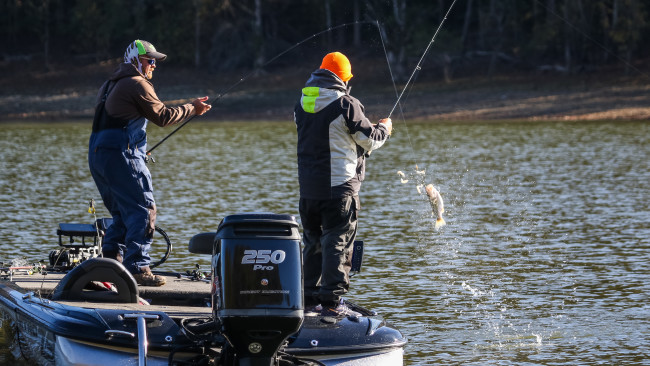
2. Smith finds schools of his own
Like Wagner, local stick Blake Smith found a huge school from which he caught most of his weight. His, though, was significantly shallower, as he sat on a big flat in the Wolf River with some ditches, channel swings and isolated cover.
For three days, Smith worked on those fish, stacking up 11-9, 11-13 and 10-11, respectively. If he would have managed to make that three consecutive 11-plus-pound bags, we’d have a different winner.
Unfortunately for Smith, he decided to take it easy on his school on day two after catching a limit in 15 minutes and culling once or twice. On day three, those fish had scattered a bit and proved much tougher to catch.
“I had to literally just pick off random fish all day,” he says of his day three struggles. “I had to change up everything.”
“Everything” included switching from a Strike King 1.5 square-bill to a custom-made umbrella rig to catch his fish. He also mixed in a Texas-rigged Zoom Brush Hog (green pumpkin blue flake with a chartreuse tail) on a 4/0 Owner hook with a 3/8-ounce tungsten weight for fish that wanted something a little slower.
Smith had a few other schools that he checked on throughout the tournament, but his primary school in the Wolf River was the ticket for Smith to finish second and secure his fourth top 10 in FLW competition.
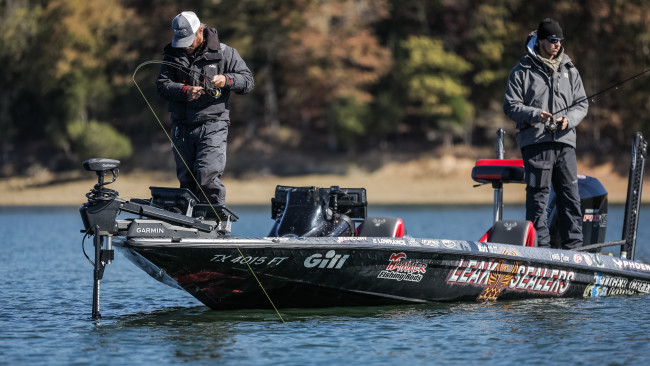
3. Ebare goes deep
Finding schools of fish was the key to locking up a top-three finish. Dakota Ebare discovered what Wagner found out late during day two, but Ebare knew it from the start.
All week, Ebare focused on deep schools in the middle of creeks, chasing bait and moving closer to their normal fall patterns. The problem wasn’t the game plan; it was the execution. He lost some key fish throughout the week.
With the everchanging weather conditions throughout the week, Ebare had to mix up his bait selection. He did some damage with a Cotton Cordell Jigging Spoon rigged on a 7-foot, 3-inch medium-heavy Hammer rod and a Picasso HD Bait Ball Umbrella Rig tipped with Big Bite Baits Finesse Swimmers, which he threw on a 7-foot, 11-inch double extra heavy Hammer rod. Both were paired with Shimano reels. On day three, he also mixed in a drop-shot to catch a few key keepers out of deep water.
Bluebird skies with very little wind paired with ultra-clear water made catching even the deepest fish on Dale Hollow a challenge.
“I was glad to have the ones I got,” Ebare says. “I pulled up on a brush pile that was loaded with fish. They were sitting just above the brush pile. I threw in there first cast and caught my biggest one and they scattered. They just won’t stay.
“All week long they haven’t really taken the pressure. When you get a school and catch one, they scatter.”
It’s frustrating to see so many big fish and not be able to catch enough of them to grab a win, but Ebare was happy to see his plan work to the tune of a top-three finish.

4. Bowling stays shallow
Jonathan Bowling of Harriman, Tenn., held the lead after day one thanks in large part to his willingness to stick to his game plan and cover a lot of productive shallow water.
On day one, Bowling put together a milk run of about 30 miles of protected bays in which he targeted vertical cover.
On day two, Bowling fished a lot of grass but began narrowing down his bait selection to 1/4-ounce Duo Realis Vibration Nitro and Apex Vibe lipless crankbaits in craw colors. Losing a couple fish hurt him, but Bowling stuck with that plan on day three to tally 9-3.
“I covered as much water as I could,” he says of his pattern. “I Just went and found a bunch of grass, graphed a bunch of grass and fished it. I just did a milk run from where I got my bites and lost my fish yesterday. I was able to catch some of those fish I lost yesterday.”
Bowling specifically looked for grass in stained water. He says the fish in clearer water wanted to tuck deeper into the grass and were harder to catch. Otherwise, it was all about hitting as much grass as possible.
The two Duo Realis baits Bowling employed were rigged on 12-pound-test fluorocarbon (down from his usual 17-pound-test due to water clarity) spooled on high-speed reels and 7-foot, 6-inch medium-power, moderate-action rods. He made the switch to those rods on day three after losing fish on day two and wanting something a little longer and stiffer.
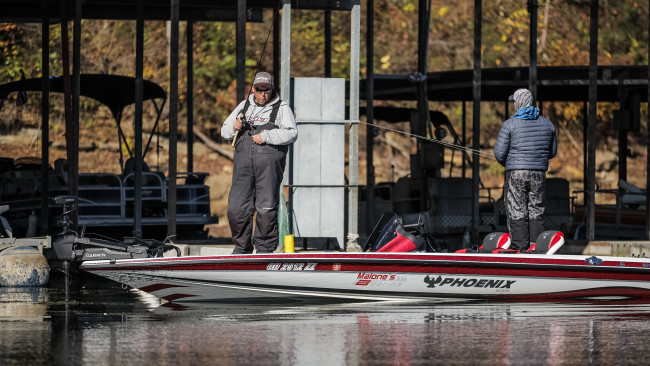
5. Malone sticks to one creek
Chris Malone spent all his time both of the first two days in one specific creek in the mid-lake area, fishing shallow for individual bass chasing bait. No one type of cover was ideal for his 5/16-ounce Dirty Jigs Swim Jig – just whatever looked good.
On day three, that pattern completely dried up and Malone had to scramble to catch his two fish for 4-8.
“That bite was completely gone,” he says of his original pattern. “The water cleared up and it got cold and it was slick – no wind at all.”
With that, Malone switched to a bladed jig instead of his swim jig and mixed in a drop-shot tipped with a 6-inch Roboworm Straight Tail Worm in morning dawn. He caught one keeper on each bait.
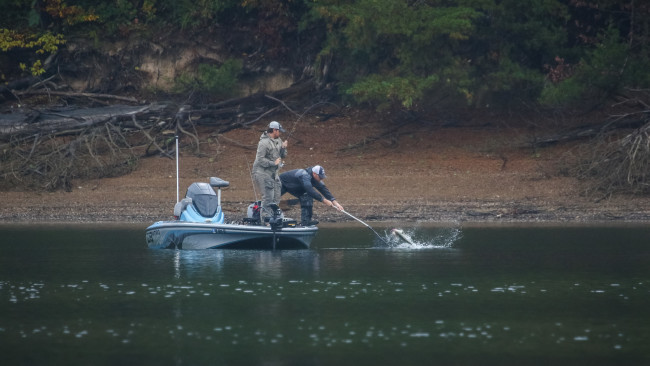
6. Ratliff leans on local knowledge and a drop-shot
With a top 10 showing at Dale Hollow, Nick Ratliff jumped to 20th in the final points standings in the Central Division and punched his ticket to the Toyota Series Championship at Lake Cumberland next month. That was Ratliff’s goal all along, though he was certainly still gunning for the win this week.
“My main thing is, yes, I want to win, but I’m trying to make Cumberland because I fish there as much or more than I fish here, and I knew I needed a really good week,” he says.
Ratliff came up short of the win, due in part to his fish not wanting to cooperate. He saw plenty of winning fish on his electronics all week, situated on and around his many brush piles, dock cables and dock blocks, but they remained lock-jawed on Saturday.
With finnicky fish in his sights, Ratliff leaned on a drop-shot consisting of a Roboworm Straight Tail Worm in various colors rigged on either a No. 1 or No. 2 Owner Cover Shot Worm Hook with either a 3/16- or 1/4-ounce weight depending on the wind.
“I caught pretty much everything I weighed on a drop-shot,” he says. “I did weigh a couple on a spoon, but I didn’t really get to brush pile fish like I wanted. I caught some in brush piles around docks and stuff like that, but really, I was fishing isolated dock cables and where the dock anchors come down. It was really the only place I could consistently get enough bites.”
While Ratliff’s local knowledge helped him secure a top-10 finish, he says it was a double-edged sword in the end. With so many waypoints to check, Ratliff had to narrow down his pattern to something that would keep him from running all over the lake without a well-defined plan of attack.
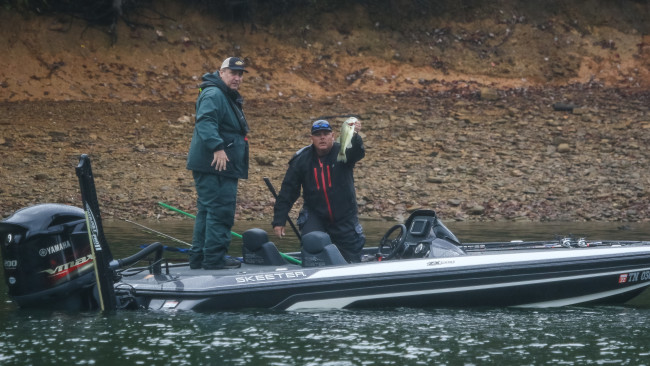
7. Stults keeps it simple
After spending his practice time throwing moving baits, Scott Stults began day one working a Texas-rigged stick bait, and the result was three quick keepers. Instead of going back to his initial plan, Stults stuck with the 5-inch Strike King Ocho with a 5/16-ounce weight to ride out the week for a top-10 finish.
Much of the water Stults was fishing had grass, which proved to be helpful on day one, but the cold front that moved in overnight didn’t seem to help matters, and on day three, he struggled to get bit in even his most productive grass patches.
“I went back to where I started on day one and had three keepers then and a keeper yesterday,” he says. “I went back in there today and made three passes on it and had maybe one bite.”
The hour-and-a-half fog delay didn’t help Stults either, as he caught several key fish in the early hours of days one and two.
When the grass pattern died, Stults resorted to a jigging spoon over brush piles, and while he did get a few bites on day three, he didn’t manage to get any fish in the boat.
In addition to the Ocho and spoon, Stults also employed a jig made by his son, who owns and operates Jaw Breaker Lures. Three of his keepers came on that jig.
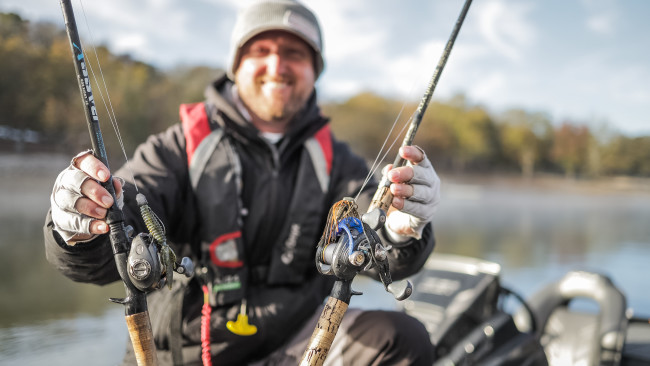
8. Boggs goes way off the beaten path
While a big portion of the field ran into the Wolf River this week, Drew Boggs went the opposite direction and made a long run into the skinny water of the Obey River – so skinny, in fact, that he damaged his lower unit and lost a prop on day two.
The reason for his run: to get away from the crowds and find something different.
With current and some stained water, Boggs was able to target wood and rock in the river to catch some mixed bags. He was one of the few anglers to catch a limit on days one and two, though his second-day limit went for just 6-9.
“I’m so happy to be where I’m at,” Boggs says. “On this lake with the practice I had … My sonar wasn’t working, and fishing deep was out.”
While two fish for 1-12 on the final day wasn’t what Boggs was hoping for, he’s not complaining about another top-10 finish. In the last four-and-a-half months, the Lebanon, Tenn., pro has seven FLW top-10s to his name, including Phoenix Bass Fishing League wins on both Kentucky Lake and Lake Chickamauga.
To catch his fish this week, Boggs relied on a Bandit Rackit Squarebill, a jig and a Reaction Innovations Sweet Beaver (green pumpkin) with a 3/8-ounce Jenko Creature Weight.
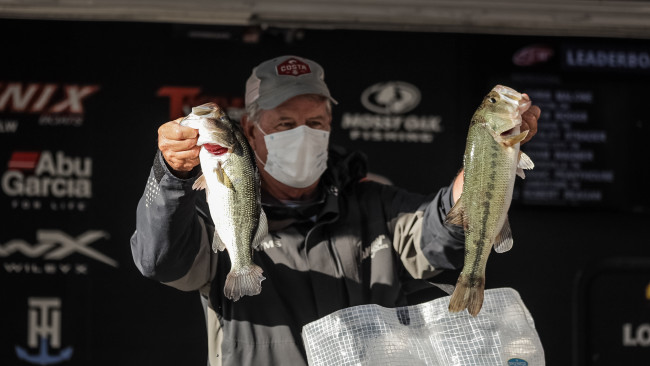
9. Deakins fishes shallow brush in one creek
For three days, Marshall Deakins never really left Mitchell Creek. There, he targeted shallow brush piles on a variety of different baits. His pattern was so successful on day one that Deakins was able to catch a limit and go exploring by 10:30.
The cold front (or some other factor) killed Deakins’ bite on day two, though.
“Yesterday, I don’t know what happened,” he says. “I don’t know if I caught them all or if that front just killed the shallow bite.”
After catching just two fish for 4-13 Friday, Deakins could have veered off course. Instead, he went back to Mitchell Creek on day three and secured his ninth-place finish.
Three baits got the call for Deakins: a 4-inch Scottsboro Tackle Swimbait, a drop-shot with a Roboworm Straight Tail Worm and a 1/4-ounce weight and a walking bait.
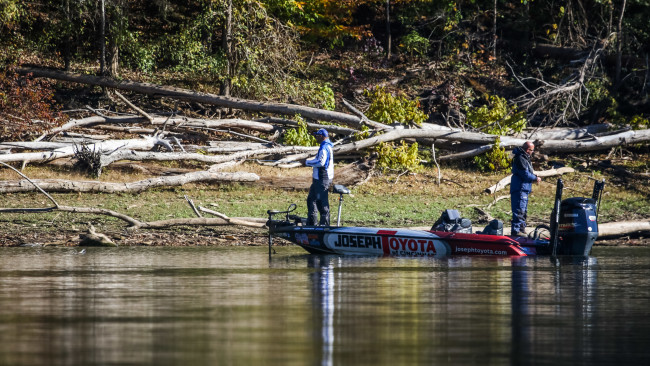
10. Hall gets skinny in Wolf
Until the final day, Billy Hall did some damage up in the Wolf River, slinging a spinnerbait around isolated wood in shallow water – the shallower the better.
“I was targeting any piece of wood you could find,” he says. “If it had more than 2 feet of water on it, I wasn’t getting bit. If it had 6 inches of water, that’s where the fish were.”
In addition to the isolated wood, Hall also chose that section of the Wolf because of the water color. With clear water nearly everywhere else on the lake, the Wolf offered something different.
“It was just typical junk fishing on these highland reservoirs,” he explains. “Chunk and wind a spinnerbait all day long.”
When Hall got a bite on the spinnerbait and couldn’t hook up, he’d follow up with a flipping jig to finish the job.